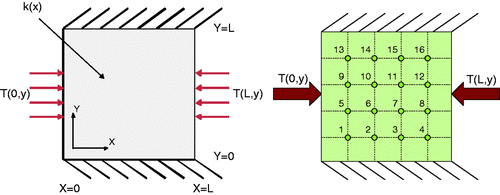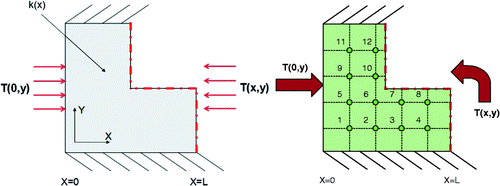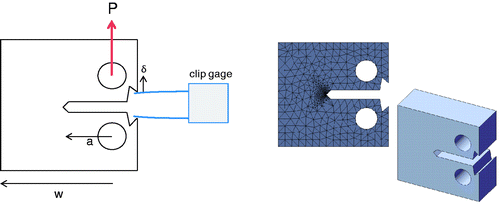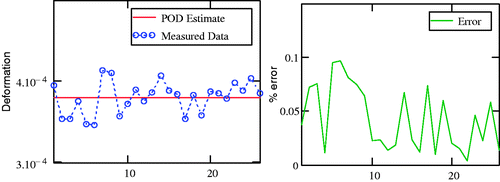Figures & data
Table 1. Truncated eigenvalues of the square region heat conduction case.
Figure 2. Comparison of exact solution against the POD estimation of temperature distribution for the square region as well as percent error.

Figure 3. Comparison of the POD-RBF estimate of thermal conductivity against the measured data for the square region.

Table 2. POD-RBF estimated spatially dependent thermal conductivity constants and their errors.
Figure 4. Comparison of the measured noisy (±0.5°) data against the POD estimation of temperature distribution for the square region.
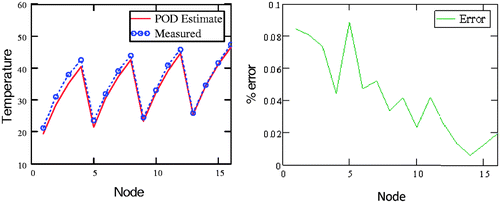
Table 3. Spatially dependent thermal conductivity constants and their corresponding errors with noise added to represent empirical data collection.
Figure 5. Comparison of the POD-RBF estimate of thermal conductivity against the measured noisy (±0.5°) data for the square region.
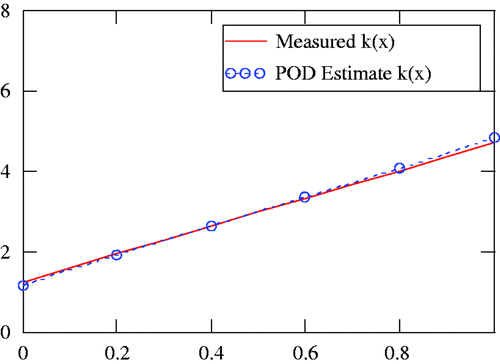
Figure 6. Comparison of selected analytical eigenfunctions to POD basis versus node number in the square region with the corresponding indices shown below each figure.
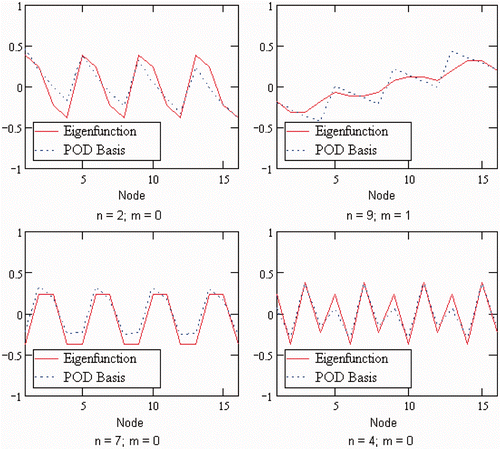
Table 4. Truncated eigenvalues of the L-region heat conduction case.
Figure 8. Comparison of the measured data against the POD estimation of temperature distribution for the L-region.
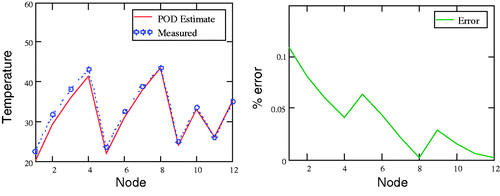
Figure 9. Comparison of the POD-RBF estimate of thermal conductivity against measured data for the L-region.
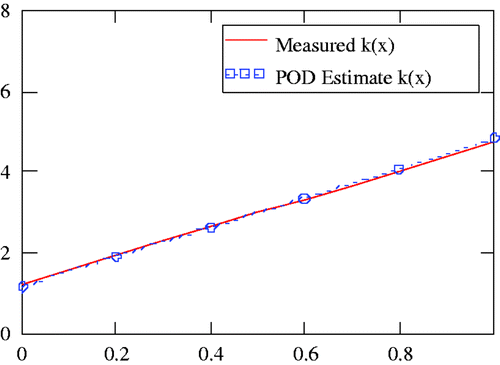
Table 5. Comparison of the measured and POD-RBF estimations of thermal conductivity of the L-region.
Figure 10. Comparison of the measured noisy (±0.5°) data against the POD estimation of temperature distribution for the L-region.
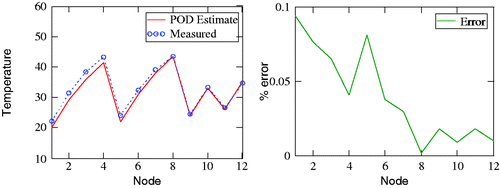
Figure 11. Comparison of the POD-RBF estimate of thermal conductivity against the measured noisy (±0.5°) data for the L–region.
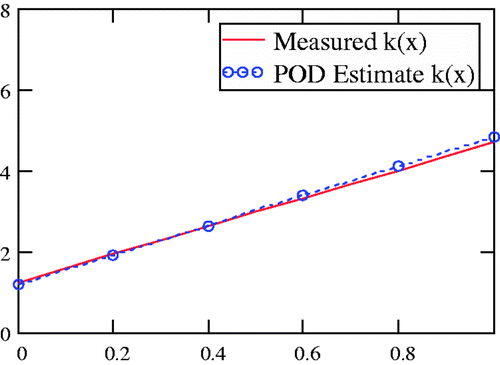
Table 6. Comparison of the measured and POD-RBF estimations of thermal conductivity of the L–region.
Figure 12. Comparison of analytical eigenfunctions to POD basis versus node number in the L-shaped domain with the corresponding indices shown below each figure.

Table 7. Truncated eigenvalues for the 3D elasticity case.
Figure 14. Comparison of FEM solution against the POD-RBF approximation of the deflection in for an elastic beam under tension and the accompanying percentage nodal error.
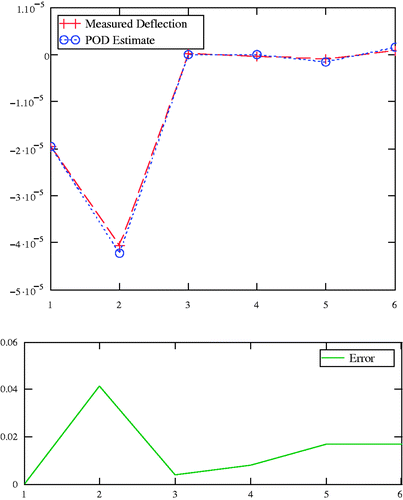
Table 8. Comparison of the actual and POD-RBF estimations of material parameters for 3D elasticity.
Figure 15. Comparison of the POD-RBF approximation against the noisy data (±10%) in each Cartesian direction for 3D elasticity.

